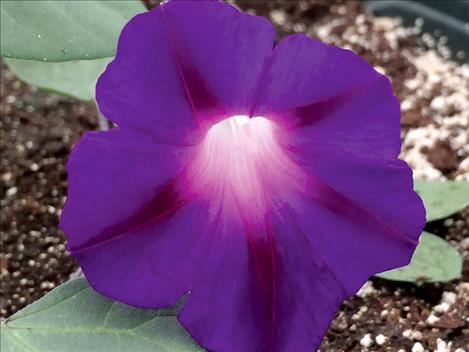June gardening calendar review
Hey savvy news reader! Thanks for choosing local.
You are now reading
1 of 3 free articles.
This month you can transplant out tender vegetables, early in the month, after frosts. If you have not planted your garden yet you can still purchase and transplant out tender vegetables that require a shorter season (80 days or fewer.) Cole crops, such as cauliflower and cabbage, and most every transplantable vegetable can be planted until about July 1, when you could begin to sow fall crops. Fertilize and prune cantaloupes; watch for pests and diseases on garden plants. Keep a watch on watering if weather is dry and hot; weed after watering as plants pull up easily.
Vegetables you can direct sow until June 15 include: amaranth, dill, summer savory, edamame beans, chervil, early-maturing corn, NZ and Malabar spinach, carrots, cucumbers, parsnips and pole beans. Sow successive crops all month of: lettuce, spinach, bush beans, beets, cabbages, cucumbers, onions, peas, radishes, potatoes.
Transplant out leeks, endive, herbs, plus tender vegetables. Some of these are: tomatoes, eggplant, peppers, cantaloupe, squash, pumpkins, watermelon. Fertilize and prune cantaloupes; when they start to vine, foliar feed with 1 tablespoon borax and 1 tablespoon Epsom salts in 1 gallon of water. Repeat when fruit is 1 inch to 2 inches in diameter.
Late in the month (for transplanting out for a fall crop) sow: Brussels sprouts, late variety cabbage, cauliflower, kohlrabi. Transplant out in late August/early September (5-6 weeks, with two sets of leaves.) Grow cool, possibly under netting to prevent cabbage loopers.
Harvest: beet greens, cauliflower, cabbage, radishes, lettuce, turnip greens, onions, peas, rhubarb and asparagus. Harvest herbs: mint, balm, lavender, sage, clary, rosemary, etc. for using fresh, drying or distilling; when just coming into flower. Lay them in the shade or on a screen in a shed to dry.
Direct sow tender annuals and half hardy annuals early in the month (before the 15th): zinnias, marigolds, cosmos, annual euphorbia, gypsophila, nasturtiums, scarlet runner beans, Scabiosa atropurpurea, stocks, sunflowers. Sow nigella (succession plant every two to four weeks until end of month).
Finish transplanting perennial starts and annual starts. Stake dahlias, delphiniums; mulch dahlias; check for slugs around auriculas, cannas, delphiniums, hollyhocks and hosta.
Take up spring bulbs such as tulips, hyacinths, fritillaries, colchicums, autumn crocuses, etc., when leaves are decayed. Carefully dig and dry them over a wire screen. Propagate from offsets, store in cool, dry place for the summer.
Plant strawberry runners into new beds. Thin tree fruits after bloom so no fruit touches (this discourages codling moths); protect (cover) cherries from birds, watch for pests on fruit trees, shrubs and roses. Wash aphids off with a force of water. Set out apple maggot traps in early to mid-June (1 for each dwarf tree; 2-3 for each semi-dwarf tree; and up to 6 for a full-sized tree.) Scrape off bugs and apply a fresh coating every two weeks. Remove loose bark and wrap trunks with cardboard or burlap, periodically removing it to capture codling moth pupae. During the growing season, remove branches affected by fire blight, cutting at least 6 inches below affected wood. Sterilize tools with alcohol or a 10 percent bleach solution between cuts. Set out peach borer traps by the 15th.
Trim evergreens and all types of hedges, and be sure to water lawns in hot weather.
















